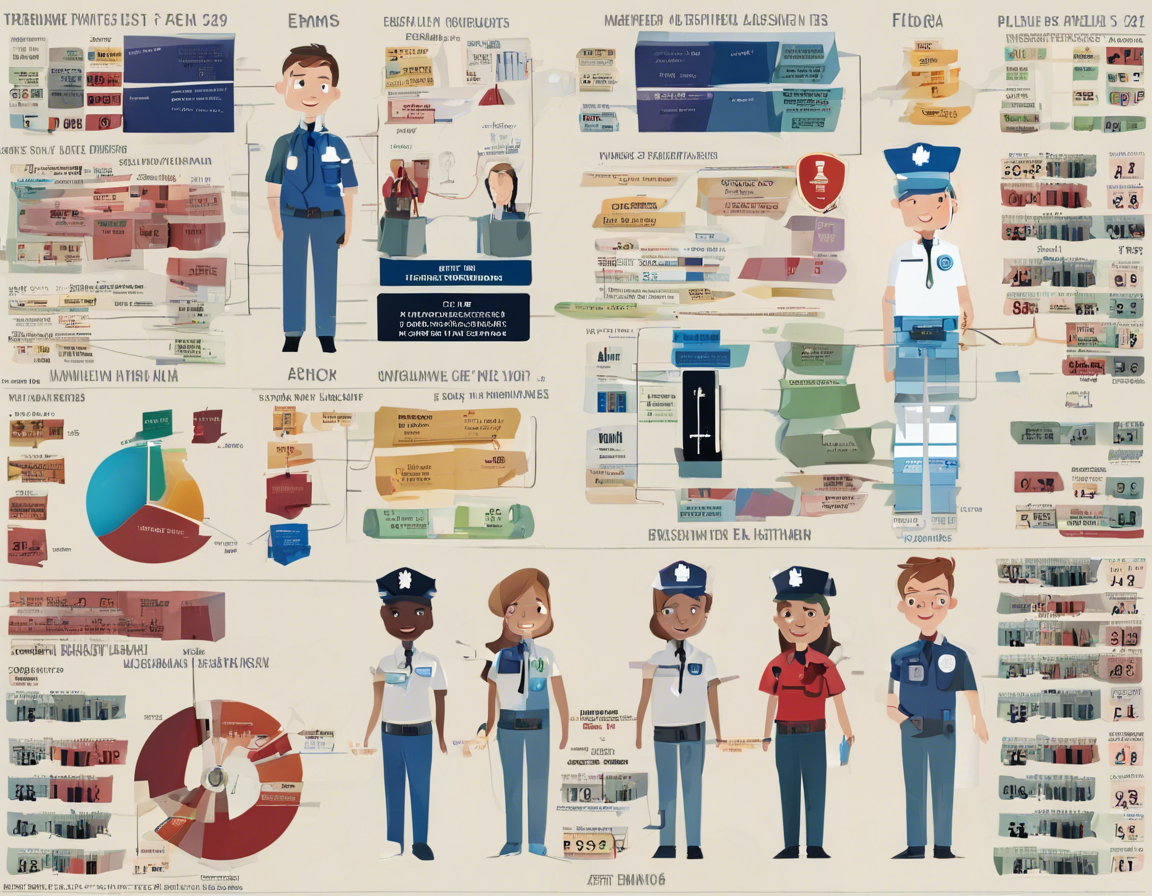As we enter 2024, the world of Emergency Medical Services (EMS) continues to evolve in response to shifting demographics, advancing technology, and changing healthcare needs. For EMS providers, staying ahead of the curve means being aware of emerging trends and innovations. In this article, we will explore some key EMS trends to watch out for in 2024 and beyond.
Telemedicine and Telehealth Integration
One of the most significant advancements in EMS in recent years has been the integration of telemedicine and telehealth solutions. In 2024, we can expect to see an even greater emphasis on virtual care in EMS, allowing for remote consultations, triage, and monitoring of patients. This trend is particularly vital in rural areas with limited access to medical facilities, where telemedicine can bridge the gap and provide timely care.
Data-Driven Decision Making
Data analytics and predictive modeling are becoming essential tools in EMS operations. By leveraging data from patient records, call volumes, and environmental factors, EMS providers can identify trends, optimize resource allocation, and improve response times. In 2024, expect to see more EMS agencies investing in data-driven decision-making to enhance efficiency and patient outcomes.
Community Paramedicine Programs
Community paramedicine programs are gaining traction as a way to provide proactive, preventive care to underserved populations. In 2024, we anticipate a rise in community paramedicine initiatives focused on chronic disease management, mental health support, and public health education. These programs not only improve health outcomes but also reduce unnecessary hospital visits and healthcare costs.
Advanced Training and Specialized Certifications
With the growing complexity of EMS calls, advanced training and specialized certifications are becoming more important for EMS providers. In 2024, we can expect to see an increased emphasis on training in areas such as critical care transport, prehospital trauma care, and pediatric emergencies. EMS professionals will need to continuously update their skills to meet the evolving demands of the field.
Mobile Integrated Healthcare
Mobile Integrated Healthcare (MIH) models integrate EMS into the broader healthcare system, focusing on preventive care, chronic disease management, and care coordination. In 2024, we predict a rise in MIH programs that work collaboratively with hospitals, primary care providers, and social services to deliver holistic care to patients in their homes. This trend signifies a shift towards a more patient-centered, integrated approach to healthcare delivery.
The Impact of Climate Change
Climate change is having a profound impact on EMS operations, with more frequent natural disasters, extreme weather events, and health emergencies. In 2024, EMS providers will need to adapt to the challenges posed by climate change, including heatwaves, wildfires, and pandemics. Preparedness, resilience, and sustainability will be key priorities for EMS agencies moving forward.
Ethical and Legal Considerations
As EMS technologies advance and healthcare policies evolve, ethical and legal considerations become increasingly complex. In 2024, EMS providers will need to navigate issues such as patient privacy, consent, scope of practice, and healthcare disparities. Staying abreast of regulatory changes and ethical guidelines will be crucial for ensuring high-quality care and compliance with industry standards.
Frequently Asked Questions (FAQs)
1. What role does technology play in modern EMS practices?
Technology plays a vital role in modern EMS practices, enabling real-time communication, GPS tracking, electronic patient care reporting, and telemedicine. These technologies improve response times, coordination, and patient outcomes.
2. How can EMS providers stay updated on the latest trends and innovations in the field?
EMS providers can stay updated by attending conferences, participating in continuing education, joining professional organizations, and following reputable EMS publications and websites. Networking with peers and engaging in peer learning also helps in staying informed.
3. What are the key challenges facing EMS providers in 2024 and beyond?
Some key challenges facing EMS providers include staffing shortages, resource constraints, increased call volumes, healthcare disparities, and rising healthcare costs. Addressing these challenges requires collaborative efforts, innovation, and advocacy for policy changes.
4. How are EMS agencies adapting to the impact of climate change?
EMS agencies are adapting to the impact of climate change by enhancing disaster preparedness, implementing sustainability measures, investing in resilience training, and collaborating with public health agencies. These measures help in mitigating the effects of extreme weather events and health emergencies.
5. What role do community paramedicine programs play in modern EMS systems?
Community paramedicine programs play a crucial role in modern EMS systems by providing preventive care, health education, chronic disease management, and social support to underserved populations. These programs help in improving health outcomes, reducing hospital visits, and addressing healthcare disparities.
